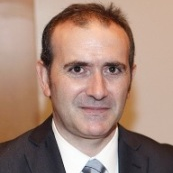Cancer Stem Cells and Resistance to Therapy
A special issue of Cells (ISSN 2073-4409). This special issue belongs to the section "Stem Cells".
Deadline for manuscript submissions: closed (30 June 2020) | Viewed by 132982
Special Issue Editor
2. Centro de Investigación Biomédica en Red de Cáncer, CIBERONC, Instituto de Salud Carlos III, 28029 Madrid, Spain
Interests: identification of new genes involved in cancer, its characterization and traslation to clinic; the identification and validation of new targets for anticancer drug
Special Issues, Collections and Topics in MDPI journals
Special Issue Information
Dear Colleagues,
In recent years, cancer stem cells (CSCs), or cancer-initiating cells (CIC), have emerged as major drivers of chemoresistance. CSCs are a subpopulation of cancer cells that possess the same self-renewal and differentiation capacities as stem cells, thus maintaining tumor growth and the ability to regenerate a heterogeneous tumor mass. Thus, CSCs have been suggested to be responsible for metastasis and tumor growth and development. Furthermore, it has been reported that traditional chemotherapy fails to target CSCs, which could account for relapse and tumor resistance. This Special Issue will review different areas that may be involved in therapy resistance dependent on CSC populations in the tumor. There are different areas such as the subpopulation heterogeneity of CSC pools in different sections of the same tumor, between primary or metastasis or the same tumor type in different patients; the difficulty to identify properly all the CIC subpopulations in the different tumor types, including the different properties of the progenitors, and, in each case, the pathways involved and the difficulty to target them pharmacologically and how the plasticity in the different aspects of metabolism may account for these differences in resistance. Finally, the relevance of the microenvironment in the response is of great relevance in the therapeutic efficacy. Any of these topics will be considered for publication, but topics of interest are not limited to this selection. Either general studies or those focusing on specific tumors could be of great interest.
Dr. Amancio Carnero
Guest Editor
Manuscript Submission Information
Manuscripts should be submitted online at www.mdpi.com by registering and logging in to this website. Once you are registered, click here to go to the submission form. Manuscripts can be submitted until the deadline. All submissions that pass pre-check are peer-reviewed. Accepted papers will be published continuously in the journal (as soon as accepted) and will be listed together on the special issue website. Research articles, review articles as well as short communications are invited. For planned papers, a title and short abstract (about 250 words) can be sent to the Editorial Office for assessment.
Submitted manuscripts should not have been published previously, nor be under consideration for publication elsewhere (except conference proceedings papers). All manuscripts are thoroughly refereed through a single-blind peer-review process. A guide for authors and other relevant information for submission of manuscripts is available on the Instructions for Authors page. Cells is an international peer-reviewed open access semimonthly journal published by MDPI.
Please visit the Instructions for Authors page before submitting a manuscript. The Article Processing Charge (APC) for publication in this open access journal is 2700 CHF (Swiss Francs). Submitted papers should be well formatted and use good English. Authors may use MDPI's English editing service prior to publication or during author revisions.
Benefits of Publishing in a Special Issue
- Ease of navigation: Grouping papers by topic helps scholars navigate broad scope journals more efficiently.
- Greater discoverability: Special Issues support the reach and impact of scientific research. Articles in Special Issues are more discoverable and cited more frequently.
- Expansion of research network: Special Issues facilitate connections among authors, fostering scientific collaborations.
- External promotion: Articles in Special Issues are often promoted through the journal's social media, increasing their visibility.
- Reprint: MDPI Books provides the opportunity to republish successful Special Issues in book format, both online and in print.
Further information on MDPI's Special Issue policies can be found here.






